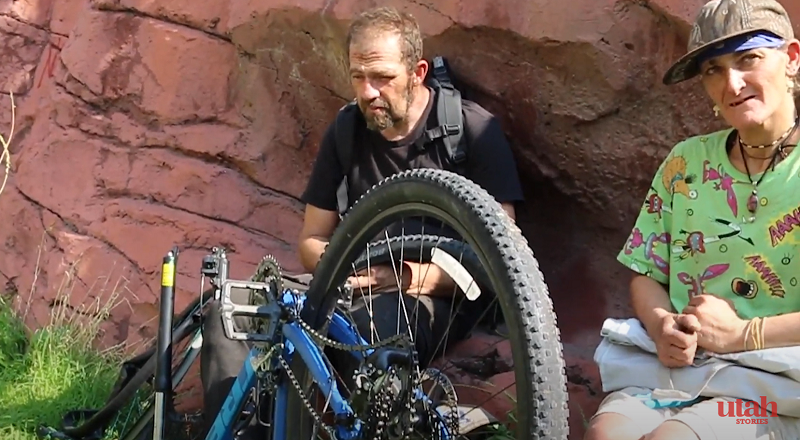
We talked to Dennis and Tami a year ago on the Hidden Hollow Trail between Sugar House Park and the Sugar House central business district.
Dennis told me how he always saw Salt Lake City as being a place that has “had all of its ducks in a row.” But when he returned to Salt Lake, after living in California for ten years he was surprised by the level of lawlessness and drug activity found in the city. Especially since the Road Home downtown homeless shelter was demolished in 2016. He says that the new areas where drug activity runs rampant are in front of the homeless resource centers.
“I was amazed how outside of the Woman’s Resource Center I found you could go there and get dope or a prostitute.” He added that there were things going on there that he never imagined he would find in Salt Lake City.
Dennis and his girlfriend Tami are among the unsheltered homeless population camping outside. When asked if he would consider moving into a tiny home Dennis had some very articulate ideas concerning the trend.
Dennis belives tiny home villages to be a great idea to solve the deeply affordable housing crisis if done in a manner that offers clear economic incentives for addicts to become clean. Otherwise, he says they can just turn areas into “a big mess”.
Dennis believes that if drug users are given free housing they should “go to a ghetto” until they can get clean. This could offer them an incentive to get off drugs and get a job so they could qualify for nicer housing that perhaps offers more amenities such as personal bathrooms and kitchens. “Maybe when their UA (urine analysis) shows clean they can go to a tiny home, then after they are clean for awhile and working then they can get into a nicer place and eventually move into a home.” He added, “Like real life.”
Currently, unsheltered, drug-addicted, chronically homeless individuals can qualify to live in very nice up-scale housing like the Magnolia Apartments in downtown Salt Lake City. The Magnolia Apartments have been reported on previously by Utah Stories to be a site for drug trafficking and prostitution.
Utah Stories showed the clip above and got the reaction of Samuel Grenny, who is the outreach coordinator for the Otherside Village, which is the first tiny home planned community to be built in Utah. Also on the show, Samuel shows how the Otherside tiny home village will offer a complete community to chronically unsheltered Utahns with drug addiction issues as well as psychological disorders.
Samuel told Utah Stories that they plan to break ground as soon as this year.
RELATED CONTENT
Homeless Population in Utah Increases Due to Seniors Being Priced out of the Rental Market
Salt Lake City’s Homeless Abatement Policies Examined
Investigating Homelessness Death and Public Safety in Utah
New York Times Journalist Appalled by the Homeless Situation in Salt Lake
SUPPORT LOCAL JOURNALISM AND SUBSCRIBE TO PRINT MAGAZINE
Subscribe to Utah Stories weekly newsletter and get our stories directly to your inbox





